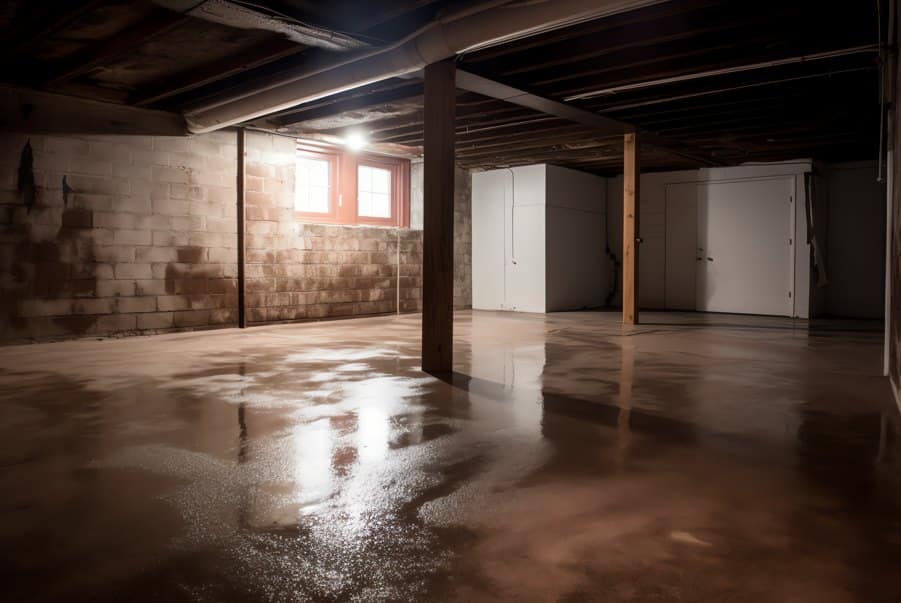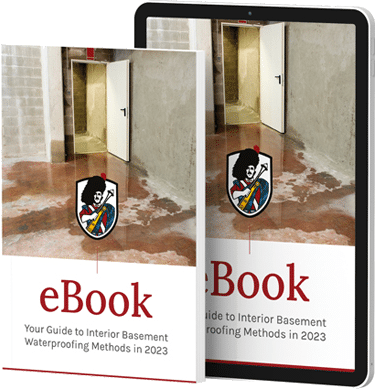A weeping tile system is one of the most important defenses your home has against water damage. Despite the name, there’s nothing decorative about it—it’s a drainage system that runs around the perimeter of your home’s foundation. Its job is simple: redirect groundwater away from your basement and foundation walls.
In modern construction, weeping tiles are actually perforated plastic pipes covered in gravel and a filter membrane. Older systems often used clay or concrete tiles. When working properly, they prevent hydrostatic pressure, leaks, and basement flooding.
But what happens when your weeping tile system isn’t doing its job? That’s when the warning signs begin to appear.
Why Weeping Tile Problems Shouldn’t Be Ignored
When a weeping tile system clogs, cracks, or collapses, water has nowhere to go. Instead, it builds up around your foundation and can:
- Leak into your basement.
- Weaken foundation walls.
- Cause mold growth.
- Lead to expensive structural repairs.
Catching problems early can save you thousands of dollars in future repairs.
The Top Signs of Weeping Tile Problems
1. Water Seepage in the Basement
One of the most common signs is water entering your basement. You may notice damp spots on the floor, trickles along the wall, or pooling water after heavy rain.
If your basement floods during a spring thaw or storm, chances are your weeping tile system isn’t draining water properly.
2. Persistent Dampness and Musty Odours
Even without visible water, constant humidity and a musty smell are red flags. This usually means moisture is seeping through cracks in your foundation because groundwater isn’t being diverted.
3. Cracks in Foundation Walls
When water pressure builds up outside your foundation, it looks for a way in. Over time, this can lead to vertical or horizontal cracks in your basement walls. If these cracks widen or leak, it’s time to call in a waterproofing professional.
4. Mold and Mildew Growth
Mold thrives in damp conditions. If you see black spots on walls, peeling paint, or bubbling drywall, it could be a sign that excess water is entering through a compromised weeping tile system.
5. Soggy Soil or Pooled Water Outside
Step outside after a rainstorm. Do you see standing water near your foundation? Is the soil around your home consistently wet? This can mean your exterior drainage system is blocked and water isn’t flowing away properly.
6. Basement Floor Heaving or Cracks
In severe cases, excess water under your home can put upward pressure on the basement floor, causing it to heave or crack. This is a serious structural issue that often ties back to failed or clogged weeping tiles.
7. Water Stains on Basement Walls or Floors
Look for brown, white, or yellow stains along your basement walls or at the base of the floor. These stains often indicate past water seepage caused by drainage issues.
8. A Continuously Running Sump Pump
If your sump pump is working non-stop, it may be compensating for a failed weeping tile system. The two usually work together, so problems with one often stress the other.
Causes of Weeping Tile Problems
Understanding what causes these issues can help you prevent them:
- Clogs from debris, dirt, or roots – Over time, soil and roots infiltrate the pipes.
- Age of the system – Clay and concrete tiles in older homes are especially prone to collapse.
- Poor installation – Incorrect slope or lack of filter membrane leads to early failure.
- Freeze-thaw cycles – Harsh Canadian winters can cause cracks or shifts.
How to Confirm If Your Weeping Tile System Is Failing
If you suspect problems, here are a few diagnostic steps:
- Camera inspection – Professionals can run a waterproof camera through the pipe.
- Water test – Pour water near the foundation and see if it drains.
- Check the sump pump connection – If no water flows into the sump pit, the weeping tile may be blocked.
Repair and Replacement Options
The solution depends on the severity:
- Weeping tile flushing – High-pressure water jets can sometimes clear clogs.
- Partial replacement – Damaged sections can be dug up and replaced.
- Full system replacement – Necessary for collapsed or outdated clay tile systems.
- Adding waterproofing membranes – Reinforces the system and protects your basement walls.
Why You Should Call GJ MacRae for Weeping Tile Problems
For over 40 years, GJ MacRae has been the trusted choice in the GTA for basement waterproofing and drainage system repair.
Here’s why:
- Experience: Over 10,000 successful projects completed.
- Specialization: Experts in hand excavation, ensuring precision and minimal disruption.
- Warranty: Industry-leading 15-year transferable warranty.
- Local knowledge: We understand Toronto and GTA soil and weather conditions better than anyone.
If you’re noticing water seepage, cracks, or a musty basement, don’t wait until the next storm. Call GJ MacRae at (905) 824-2557 or visit our website to schedule an inspection today.







